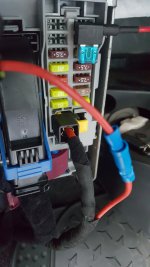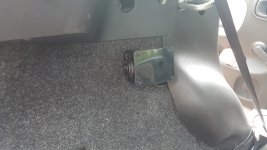- Joined
- May 6, 2017
- Messages
- 36
- Points
- 11
Apologies if this isn't in the right section, but as it relates to the 2012+ Panda, it seemed logical.
I want to put a 12v power supply in the boot that I can use without needing the ignition on (10A,120w max). Ideally I would run it straight from the battery, but I can't see an easy way to route any cable into the cab area from the bonnet. Has anyone done this, and if so how did you route the cable, or is there a point in the car where I can pick up an always live 12v supply?
Hope someone can help point me in the right direction!
I want to put a 12v power supply in the boot that I can use without needing the ignition on (10A,120w max). Ideally I would run it straight from the battery, but I can't see an easy way to route any cable into the cab area from the bonnet. Has anyone done this, and if so how did you route the cable, or is there a point in the car where I can pick up an always live 12v supply?
Hope someone can help point me in the right direction!



